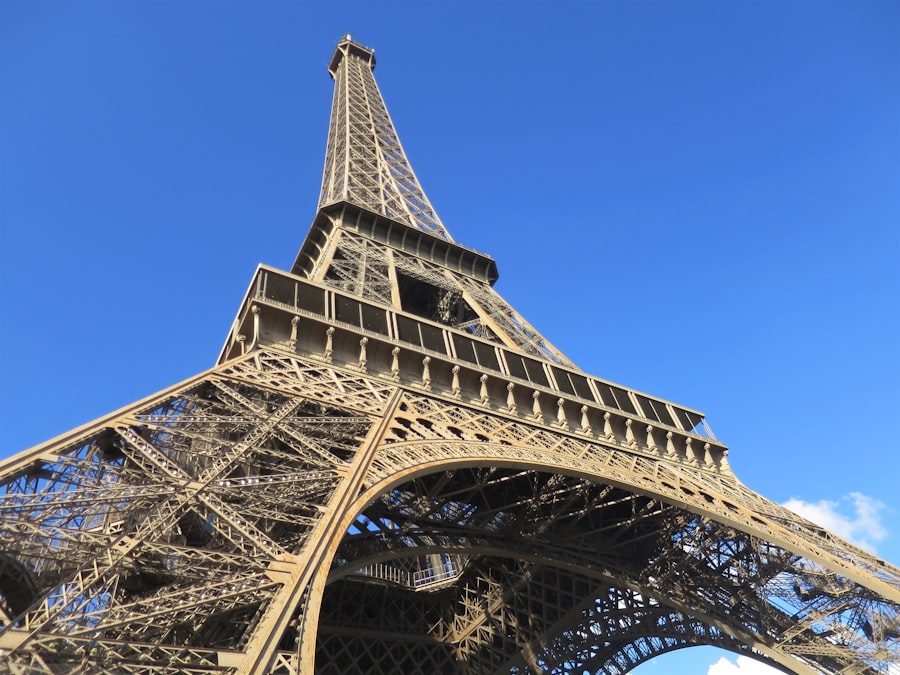The world is replete with architectural marvels that have stood the test of time, showcasing the ingenuity and creativity of ancient civilizations. Among these, the Great Pyramid of Giza in Egypt stands as a testament to the remarkable engineering skills of the ancient Egyptians. Constructed around 2580–2560 BC, this monumental structure was originally built as a tomb for Pharaoh Khufu.
The pyramid, composed of approximately 2.3 million blocks of stone, each weighing an average of 2.5 tons, exemplifies the advanced understanding of mathematics and astronomy possessed by its builders. The precision with which the pyramid was aligned to the cardinal points is a feat that continues to baffle modern architects and historians alike. In addition to the Great Pyramid, the Parthenon in Athens, Greece, represents another pinnacle of ancient architectural achievement.
Dedicated to the goddess Athena, this temple was constructed between 447 and 432 BC and is renowned for its Doric columns and intricate sculptures. The Parthenon not only served as a religious site but also symbolized the power and culture of Athens during its Golden Age. Its design incorporates subtle optical illusions, such as slight curvature in the columns, which create an impression of perfection when viewed from a distance.
This attention to detail reflects the philosophical ideals of beauty and harmony that were central to ancient Greek culture.
Key Takeaways
- Ancient architecture showcases the ingenuity and skill of past civilizations, with structures like the Pyramids of Giza and the Colosseum standing as testaments to human achievement.
- Natural marvels and scenic landscapes, such as the Grand Canyon and the Northern Lights, offer breathtaking views and opportunities for outdoor adventure.
- Iconic landmarks and monuments like the Eiffel Tower and the Statue of Liberty are not only visually stunning but also hold significant historical and cultural importance.
- Cultural and historical heritage sites, including Machu Picchu and the Acropolis, provide insight into the traditions and customs of ancient societies.
- Unique and unusual tourist attractions, like the Great Wall of China and the Taj Mahal, offer visitors the chance to experience one-of-a-kind wonders of the world.
- Famous festivals and events, such as Carnival in Rio de Janeiro and Oktoberfest in Munich, provide opportunities to celebrate and immerse oneself in different cultures.
Natural Marvels and Scenic Landscapes
Nature has sculpted breathtaking landscapes that captivate the imagination and inspire awe. One such marvel is the Grand Canyon in Arizona, USA, a colossal chasm carved by the Colorado River over millions of years. Stretching approximately 277 miles in length and reaching depths of over a mile, the Grand Canyon showcases a stunning array of geological formations and vibrant colors that change with the shifting sunlight.
Visitors can explore its vastness through hiking trails, river rafting, or simply by taking in the panoramic views from various lookout points. The interplay of light and shadow across its rugged terrain creates a mesmerizing spectacle that draws millions of tourists each year. Another natural wonder that commands attention is the Northern Lights, or Aurora Borealis, which dance across the night skies in polar regions.
This ethereal phenomenon occurs when charged particles from the sun collide with atoms in Earth’s atmosphere, resulting in vibrant displays of green, purple, and red lights. Countries like Norway, Iceland, and Canada offer prime viewing opportunities for this celestial ballet. The experience of witnessing the Northern Lights is often described as otherworldly, evoking feelings of wonder and connection to the universe.
Travelers often venture into remote areas away from city lights to fully appreciate this natural spectacle, making it a bucket-list experience for many.
Iconic Landmarks and Monuments

Iconic landmarks serve as symbols of cultural identity and historical significance, drawing visitors from around the globe. The Eiffel Tower in Paris, France, is perhaps one of the most recognizable structures in the world. Completed in 1889 for the Exposition Universelle, this iron lattice tower stands at 1,083 feet tall and was initially met with skepticism from some Parisians who deemed it an eyesore.
However, it has since become a beloved emblem of French art and engineering. The tower offers breathtaking views of Paris from its observation decks, allowing visitors to appreciate the city’s beauty from above while also serving as a reminder of France’s innovative spirit during the Industrial Revolution. Similarly, the Statue of Liberty in New York Harbor represents freedom and democracy, welcoming millions of immigrants to American shores since its dedication in 1886.
Designed by French sculptor Frédéric Auguste Bartholdi and gifted to the United States by France, this colossal statue stands at 305 feet from heel to tip of the torch. It symbolizes hope and opportunity for those seeking a new life in America. The statue’s intricate details, including its seven-pointed crown representing the seven continents and seas, reflect a deep commitment to universal ideals.
Visitors can explore Liberty Island and learn about its history through exhibits that highlight its significance as a beacon of hope.
Cultural and Historical Heritage Sites
| Country | Number of Sites | UNESCO World Heritage Sites |
|---|---|---|
| Italy | 58 | 55 |
| China | 55 | 56 |
| Spain | 48 | 48 |
| Germany | 46 | 46 |
Cultural heritage sites are invaluable treasures that preserve the history and traditions of civilizations past. The ancient city of Petra in Jordan is one such site that has captivated explorers for centuries. Carved into rose-red cliffs by the Nabataeans over 2,000 years ago, Petra was once a thriving trade hub connecting various cultures across trade routes.
Its most famous structure, Al-Khazneh (The Treasury), showcases intricate Hellenistic architecture that reflects a blend of Eastern and Western influences. Today, Petra is recognized as a UNESCO World Heritage Site and attracts visitors eager to explore its archaeological wonders and learn about its rich history. Another significant heritage site is Machu Picchu in Peru, an Incan citadel nestled high in the Andes Mountains.
Believed to have been built in the 15th century under Emperor Pachacuti, Machu Picchu remains an enduring symbol of Incan ingenuity and spirituality. The site features terraced agricultural fields, sophisticated water management systems, and stone structures that harmonize with their natural surroundings. Rediscovered by American historian Hiram Bingham in 1911, Machu Picchu has since become one of the most visited archaeological sites in the world.
Its breathtaking vistas and enigmatic ruins invite exploration while offering insights into Incan culture and their connection to nature.
Unique and Unusual Tourist Attractions
Travelers often seek out unique attractions that offer unconventional experiences beyond traditional sightseeing. One such destination is the Catacombs of Paris, an underground ossuary that houses the remains of over six million people. Established in the late 18th century due to overcrowded cemeteries, these catacombs stretch for miles beneath the city streets.
Visitors can navigate through dimly lit tunnels adorned with skulls and bones arranged in artistic patterns, providing a haunting yet fascinating glimpse into Paris’s history with death and burial practices. This macabre attraction draws those intrigued by history and the darker aspects of human existence. Another unusual tourist spot is the Door to Hell in Turkmenistan, a fiery crater that has been burning continuously since it was ignited by Soviet geologists in 1971.
Located in the Karakum Desert, this natural gas field collapsed into a cavernous pit filled with flames that create an otherworldly glow against the night sky. The sight is both eerie and mesmerizing, attracting adventurous travelers who wish to witness this surreal phenomenon firsthand. The Door to Hell serves as a reminder of humanity’s impact on nature while also sparking curiosity about geological processes.
Famous Festivals and Events

Festivals around the world celebrate cultural heritage, artistic expression, and community spirit, drawing visitors eager to partake in these vibrant experiences. One of the most famous is Carnival in Rio de Janeiro, Brazil, known for its extravagant parades featuring samba dancers adorned in dazzling costumes. This annual event takes place before Lent and attracts millions of revelers who fill the streets with music, dance, and celebration.
The energy is palpable as samba schools compete for glory in elaborate performances that showcase Brazilian culture’s richness and diversity. In contrast, Diwali, also known as the Festival of Lights, is celebrated by millions across India and among Indian communities worldwide. This five-day festival symbolizes the victory of light over darkness and good over evil.
Homes are adorned with oil lamps (diyas) and colorful rangoli designs while families come together to share feasts and exchange gifts. Fireworks illuminate the night sky as people celebrate with joy and reverence. Diwali not only highlights India’s rich cultural tapestry but also fosters a sense of unity among diverse communities as they come together to celebrate shared values.
These festivals exemplify how cultural events can transcend geographical boundaries, fostering connections among people while celebrating their unique traditions and histories. Each festival offers an opportunity for travelers to immerse themselves in local customs while creating lasting memories through shared experiences.
If you’re planning a trip to explore some of the world’s most popular tourist attractions, it’s essential to be well-prepared, especially for the long flights that might be involved. For helpful tips on what to pack to make your journey as comfortable as possible, check out this comprehensive guide on packing essentials for long flights. Whether you’re heading to the bustling streets of Tokyo or the historic sites of Jeddah, being well-prepared can make your travel experience much more enjoyable. Read more about how to optimize your travel experience by visiting Your Guide to Packing Long Flight Essentials.
FAQs
What are popular tourist attractions?
Popular tourist attractions are places or landmarks that are frequently visited by tourists due to their cultural, historical, natural, or entertainment value.
What are some examples of popular tourist attractions?
Some examples of popular tourist attractions include the Eiffel Tower in Paris, the Great Wall of China, the Taj Mahal in India, the Grand Canyon in the United States, and the Colosseum in Rome.
Why do people visit popular tourist attractions?
People visit popular tourist attractions to experience and learn about different cultures, history, and natural wonders. They also visit these attractions for leisure, relaxation, and to create lasting memories.
How do popular tourist attractions benefit the local economy?
Popular tourist attractions can benefit the local economy by creating jobs in the tourism industry, generating revenue for local businesses, and increasing the demand for goods and services in the area.
What are some challenges associated with popular tourist attractions?
Some challenges associated with popular tourist attractions include overcrowding, environmental impact, preservation of historical sites, and managing the influx of tourists to ensure the safety and enjoyment of visitors.

